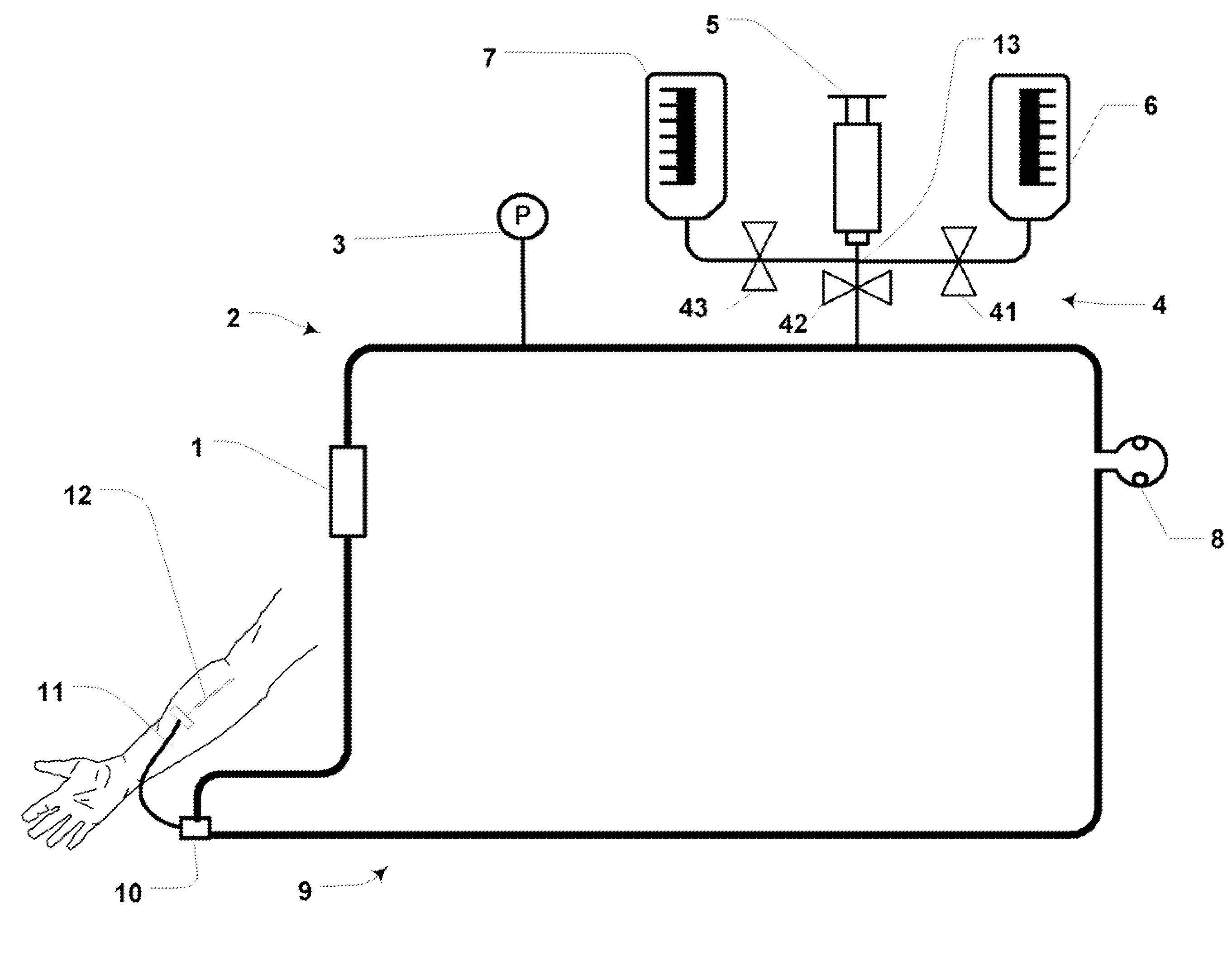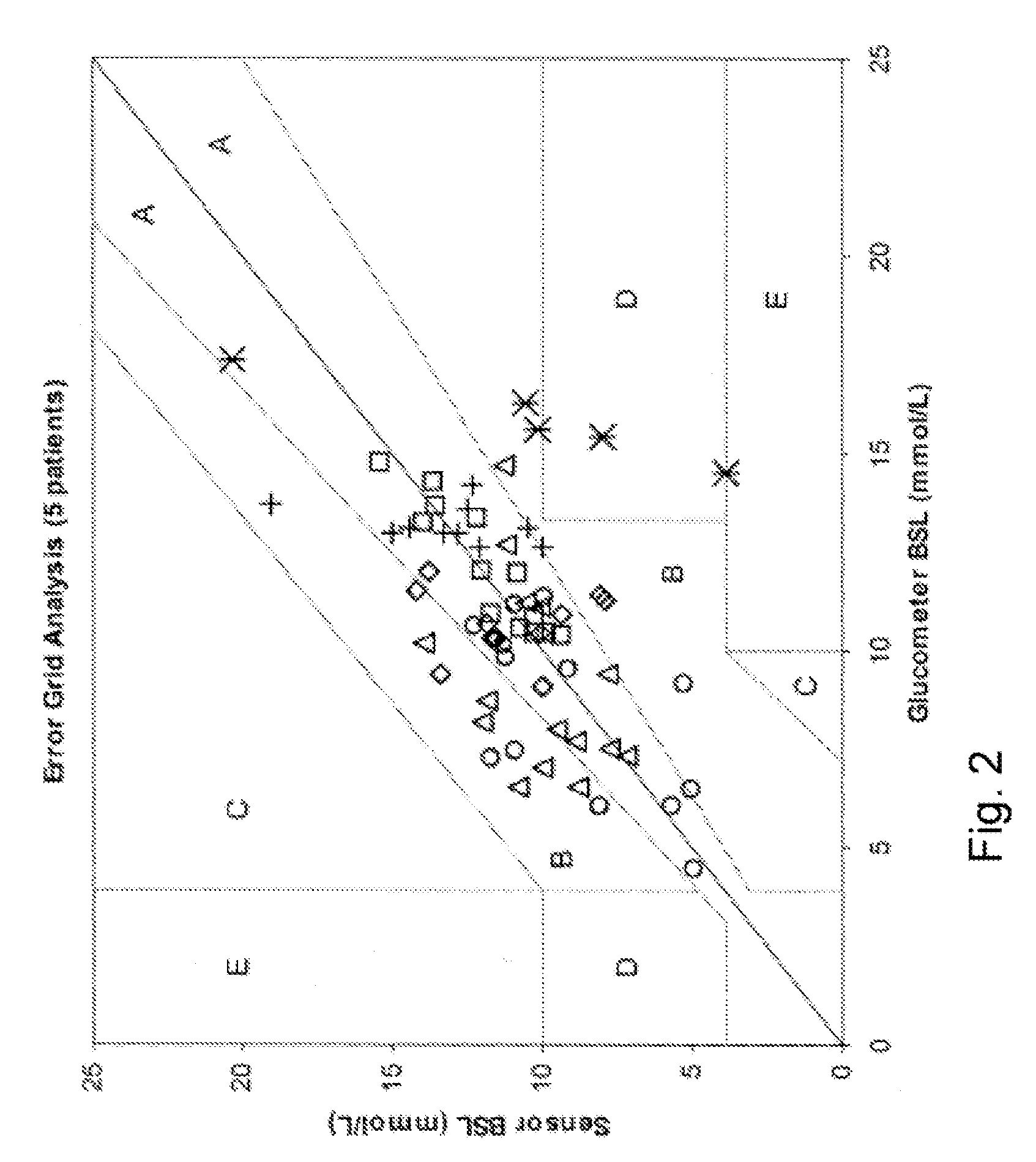Blood Analyte Determinations
a blood analyte and blood technology, applied in the field of blood analyte measurement, can solve the problems of increased risk of hypoglycemia, difficult adoption, and patients exposed to hypoglycemia for more than 30 minutes, and achieve the effect of generally higher risk of infection
- Summary
- Abstract
- Description
- Claims
- Application Information
AI Technical Summary
Benefits of technology
Problems solved by technology
Method used
Image
Examples
example embodiment
[0064 Comprising a Blood Loop System with a Syringe Pump.
[0065]FIG. 3 is a schematic illustration of an example embodiment of the present invention comprising a blood access system using a blood flow loop. The system comprises a catheter (or similar blood access device) (12) in fluid communication with the vascular system of a patient. A tubing extension (11) (if required) extends from the catheter (12) to a junction (10). A first side of the junction (10) connects with fluid transport apparatus (2) such as tubing (for reference purposes called the “left side” of the blood loop); a second side of the junction (10) connects with fluid transport apparatus (9) such as tubing (for reference purposes called the “right side of the blood loop). A sensor measurement cell (1) and a pressure measurement device (3) mount with the left side (2) of the blood loop. A peristaltic pump (8) mounts between the left side (2) and the right side (9) of the blood loop. A pinch valve (42) (“pinch valve” i...
PUM
 Login to View More
Login to View More Abstract
Description
Claims
Application Information
 Login to View More
Login to View More - R&D
- Intellectual Property
- Life Sciences
- Materials
- Tech Scout
- Unparalleled Data Quality
- Higher Quality Content
- 60% Fewer Hallucinations
Browse by: Latest US Patents, China's latest patents, Technical Efficacy Thesaurus, Application Domain, Technology Topic, Popular Technical Reports.
© 2025 PatSnap. All rights reserved.Legal|Privacy policy|Modern Slavery Act Transparency Statement|Sitemap|About US| Contact US: help@patsnap.com



